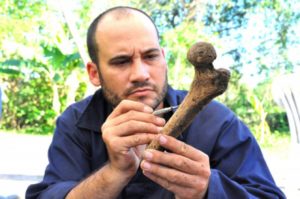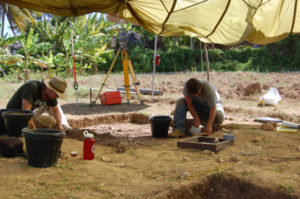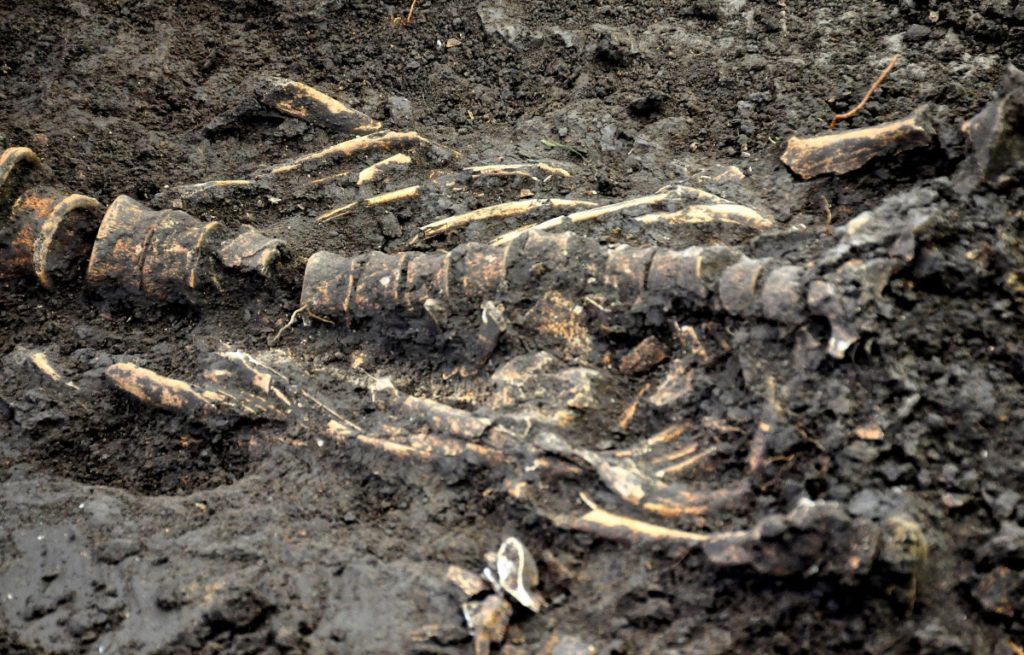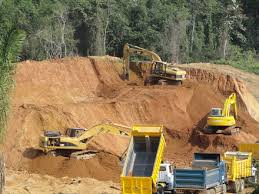 CUBAN AND CANADIAN ARCHAEOLOGISTS SURPRISED WITH NEW ABORIGINAL FINDINGS.
CUBAN AND CANADIAN ARCHAEOLOGISTS SURPRISED WITH NEW ABORIGINAL FINDINGS.
Specialists from the Cuban Institute of Anthropology along with members of the University of Winnipeg in Canada found several human bones, rudimentary instruments and other objects, presumably dating back more than 2,000 years ago, in the Playa El Mango settlement, in the province of Granma, according to the official newspaper Juventud Rebelde. The excavation works in the mentioned zone and corroborated the existence of some elements that vary the perception on the aborigines that populated the country thousands of years before the arrival of the Spanish conquerors.
Doctor Ulises González Herrera, from the Department of Archeology of the Cuban Institute of Anthropology, at the head of the scientific expedition, explained to the press that these primitive groups were not only collectors, fishermen and hunters, as was thought up to the present, because they also had an incipient agriculture and knew the benefits of locating in the highest places within the lagoon system of this vast plain. The first settlers of these lands, who had no contact with the Spaniards because they lived before the conquest, did not have writing, were expert fishermen and lived in housing structures without much solidity.
They planted corn, sweet potatoes and other crops. It is something we can learn from the study of organic residues adhering to the tartar of teeth extracted from the human remains found some time ago in this archaeological site, considered one of the most important in the insular Caribbean, said González.
He specified that these excavations give continuity to those carried out in 2015, which are part of the project Archeology of mortuary practices in aboriginal societies with low production levels in Cuba, and that have the complexity of being carried out on land currently occupied by local people.
In the field studies carried out three years ago, hundreds of objects made from sharks, shells, wood or stone have been found, as well as needles, knives and ornaments that those ancestors used in their bodies. For the archaeologist Armando Yero Masdeu, from the House of Cuban Nationality, another of the institutions involved in the project, the known classifications of siboneyes or taínos need to be updated by the growing discovery of evidence that changes conceptions about the aborigines of the Island.
“We knew from previous studies that there would be important findings, but we did not imagine that they were of this magnitude, we found more than the bones we thought,” Yero said.
According to the state newspaper, the aboriginal settlement was discovered in 1941 by the manzanillo doctor Bernardo Uset, expert in archeology, and only 39 years later it was studied superficially. Then, in 1986, 2015, 2016 and 2017, other excavations were carried out, all of great interest for the national history due to the number of outstanding findings.
 ARQUEÓLOGOS CUBANOS Y CANADIENSES SORPRENDIDOS ANTE NUEVOS HALLAZGOS ABORÍGENES.
ARQUEÓLOGOS CUBANOS Y CANADIENSES SORPRENDIDOS ANTE NUEVOS HALLAZGOS ABORÍGENES.
Especialistas Del Instituto Cubano de Antropología junto a miembros de la Universidad de Winnipeg de Canadá hallaron varias osamentas humanas, instrumentos rudimentarios y otros objetos, que presumiblemente datan de hace más de 2.000 años, en el asentamiento Playa El Mango, en la provincia de Granma, recogió el diario oficial Juventud Rebelde. Los trabajos de excavación en la mencionada zona y corroboraron la existencia de algunos elementos que varían la percepción sobre los aborígenes que poblaron el país miles de años antes de la llegada de los conquistadores españoles.
El Doctor Ulises González Herrera, del Departamento de Arqueología del Instituto Cubano de Antropología, al frente de la expedición científica, explicó a la prensa que estos grupos primigenios no solo eran recolectores, pescadores y cazadores, como se pensaba hasta el presente, porque también tuvieron una agricultura incipiente y conocían los beneficios de ubicarse en los lugares más altos dentro del sistema de lagunas de esta extensa llanura. Los primeros pobladores de estas tierras, que no tuvieron contacto con los españoles porque vivieron antes de la conquista, no poseían escritura, eran expertos pescadores y vivían en estructuras habitacionales sin mucha solidez.
Ellos sembraron maíz, boniato y otros cultivos. Es algo que podemos saber por el estudio de residuos orgánicos adheridos al sarro de dientes extraídos de los restos humanos encontrados hace algún tiempo en este yacimiento arqueológico, considerado uno de los más importantes del Caribe insular, expresó González.
Precisó que estas excavaciones dan continuidad a las realizadas en 2015, que forman parte del proyecto Arqueología de prácticas mortuorias en sociedades aborígenes de bajos niveles productivos en Cuba, y que tienen la complejidad de realizarse en terrenos ocupados actualmente por pobladores del lugar.
En los estudios de campo realizados desde hace tres años se han encontrado cientos de objetos confeccionados a partir de tiburones, conchas, madera o piedra, además de agujas, cuchillos y adornos que empleaban en su cuerpo aquellos antepasados. Para el arqueólogo Armando Yero Masdeu, de la Casa de la Nacionalidad Cubana, otra de las instituciones involucradas en el proyecto, las clasificaciones conocidas de siboneyes o taínos necesitan actualizarse por el hallazgo creciente de pruebas que cambian concepciones sobre los aborígenes de la Isla.
“Sabíamos por los estudios previos que habría hallazgos importantes, pero no imaginamos que fueran de esta magnitud. Encontramos más de las osamentas que pensábamos”, dijo Yero.
Según el periódico estatal, el asentamiento aborigen fue descubierto en 1941 por el médico manzanillero Bernardo Uset, experto en arqueología, y solo 39 años después volvió a ser estudiado superficialmente. Luego, en 1986, 2015, 2016 y 2017, se realizaron otras excavaciones, todas de sumo interés para la historia nacional por la cantidad de hallazgos sobresalientes.
Agencies/DDC/Various/Internet Photos/Arnoldo Varona/TheCubanHistory.com
THE CUBAN HISTORY, HOLLYWOOD.






